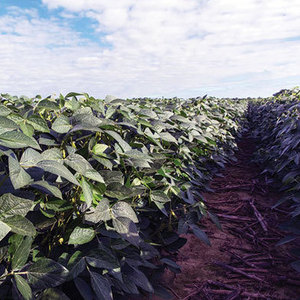Scientific Data the Cornerstone of Biofuels Policies

October 26, 2017
BY The National Biodiesel Board
Published research supports the benefits of biodiesel in reducing wastes, supporting domestic jobs and reducing harmful emissions. The National Biodiesel Board has long-touted biodiesel’s benefits by standing behind quantified, scientific analysis and making the biodiesel industry a leader when it comes to bona fide sustainability benefits. Data is the cornerstone of sound policies like the Renewable Fuel Standard and the California Low Carbon Fuel Standard.
Previous work by U.S. EPA, the California Air Resources Board, USDA, Argonne National Lab and others consistently show biodiesel lifecycle emissions at least 50 percent better than petroleum. But skeptics wonder about the indirect expansion of global agriculture as U.S. policies have their positive effect on rural farm communities. A new academic paper published in Biotechnology for Biofuels shows biodiesel’s benefits are even better than previous models suggest. More data is available now than ever before, and that data shows farmers are producing more on fewer acres. This means that penalties for indirect land use change by EPA and CARB overestimate emissions from creating new farm land.
“This latest research verifies biodiesel is an ideal option to support American-made energy,” said Don Scott, NBB director of sustainability. “The more accurate the models become, the more clearly they show biodiesel’s benefits.”
Without the controversial indirect effects, biodiesel reduces greenhouse gas (GHG) emissions by 85 percent compared to fossil fuels. Using modeling that includes predicted indirect emissions lowered biodiesel’s advantage to just more than 50 percent cleaner than diesel fuel. That is, according to the modeling done by EPA in 2010 and CARB in 2014. Purdue University’s latest research shows these models underestimated the carbon benefit of biodiesel by 10 percent.
“Biodiesel is already recognized as the commercial biofuel with the lowest net GHG emissions,” Scott said. “The power in these new findings is that science is improving. The prediction of economic impacts and land use change is becoming more reliable. More data has been analyzed today than has ever been available in the past. As these models look more and more like the real world, biodiesel’s extensive benefits become more clear.”
Advertisement
Advertisement
Related Stories
With exclusive licensing to a camelina seed variety, Ash Creek Renewables is breaking down barriers to a renewable future.
The USDA reduced its estimate for 2024-’25 soybean use in biofuel production in its latest WASDE report, released May 12. The agency expects soybean oil use in biofuel to increase during the 2025-’26 marketing year.
HutanBio's microalgal biofuel production shown to be net-negative in an independent life cycle assessment by EcoAct
HutanBio on May 8 announced that the production process for its proprietary HBx microalgal biofuel achieves net-negative carbon emissions, based on an independent cradle-to-gate life cycle assessment (LCA) conducted by EcoAct.
According to a new economic contribution study released by the Iowa Renewable Fuels Association on May 6, Iowa biofuels production has begun to reflect stagnant corn demand throughout the agriculture economy.
Repsol and Bunge on April 25 announced plans to incorporate the use of camelina and safflower feedstocks in the production of renewable fuels, including renewable diesel and sustainable aviation fuel (SAF).
Upcoming Events










